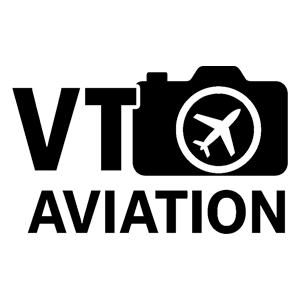In a significant move that underscores its commitment to bolstering aviation training infrastructure, Air India has announced the acquisition of 34 trainer aircraft to support its ambitious pilot training expansion. This strategic investment positions Air India as a leader in aviation training across the South Asian region, aligning with the airline’s broader transformation under the Tata Group’s ownership. This step is not just about adding planes; it’s about reshaping the future of aviation in India and South Asia.
Why This Move Matters?
Air India’s acquisition of these trainer aircraft is part of its mission to establish South Asia’s largest pilot training academy. This development is crucial at a time when the aviation sector is witnessing unprecedented growth, not only in India but globally. The International Air Transport Association (IATA) has projected that India will become the third-largest aviation market in the world by 2024. With such rapid expansion, the demand for skilled pilots is at an all-time high.
Currently, the Indian aviation industry faces a significant shortage of qualified pilots, even as airlines ramp up operations and place record-breaking orders for new aircraft to meet rising passenger demand. Air India itself recently placed a historic order for 470 aircraft, signaling its intent to reclaim its position as a global aviation powerhouse. However, adding new aircraft to the fleet is only one part of the equation; ensuring there are enough well-trained pilots to operate them is equally critical.
This investment in trainer aircraft will help bridge the gap between supply and demand for pilots, offering aspiring aviators world-class training opportunities within the region. It also demonstrates Air India’s foresight in addressing the industry’s future challenges today.
Details of the Trainer Aircraft Acquisition
The 34 trainer aircraft ordered by Air India will form the backbone of its ambitious training program. While specific details about the aircraft models are yet to be disclosed, these planes are designed to provide hands-on training to cadets, ensuring they gain practical experience in handling aircraft before moving on to commercial operations.
These aircraft will be housed at Air India’s upcoming pilot training academies, which are set to become the largest in South Asia. The training centers will be equipped with state-of-the-art simulators, classrooms, and other facilities to create a comprehensive learning environment for trainee pilots. With these resources, Air India aims to produce a steady pipeline of highly skilled pilots who can meet the demands of not just its own fleet but also the broader aviation industry.
A Boost for India’s Aviation Ecosystem
This move benefits not only Air India but also the entire Indian aviation ecosystem. By creating a regional hub for pilot training, Air India is addressing a critical bottleneck in the industry. Currently, many aspiring pilots from India and neighboring countries travel abroad for training due to the lack of adequate facilities in the region. Air India’s new academies will help reverse this trend, saving time and costs for cadets while fostering local talent.
Additionally, this initiative aligns with the Indian government’s vision of making India a global aviation hub. The Ministry of Civil Aviation has been actively promoting policies that encourage investment in aviation infrastructure, and Air India’s initiative complements these efforts. By focusing on training, Air India is not only strengthening its own operations but also contributing to the growth and self-reliance of the Indian aviation sector.
Setting New Benchmarks in Training
Air India’s pilot training program is expected to set new benchmarks in the industry, combining advanced technology with rigorous training protocols. The airline plans to leverage the latest advancements in training methodologies, including virtual reality (VR) and artificial intelligence (AI), to enhance the learning experience for cadets. This will ensure that pilots graduating from Air India’s academies are not only proficient in traditional flying skills but also well-versed in modern cockpit technologies.
Furthermore, the training program will emphasize safety, professionalism, and operational efficiency—qualities that are essential for pilots in today’s complex aviation environment. By instilling these values in its cadets, Air India aims to build a reputation for producing world-class pilots who can uphold the highest standards of the industry.
A Vision for the Future
Air India’s decision to invest in 34 trainer aircraft is more than just a business strategy; it’s a vision for the future of aviation in South Asia. By addressing the region’s pilot shortage and creating a robust training ecosystem, Air India is laying the foundation for sustainable growth in the industry.
As the airline continues its transformation journey under the Tata Group, initiatives like this will play a crucial role in shaping its success. With a renewed focus on excellence, innovation, and long-term planning, Air India is well on its way to reclaiming its status as a global leader in aviation. This bold step is a testament to Air India’s commitment to not only its own growth but also the growth of the aviation sector as a whole. As the airline prepares to train the next generation of pilots, it is also preparing to lead the industry into a new era of possibilities.


